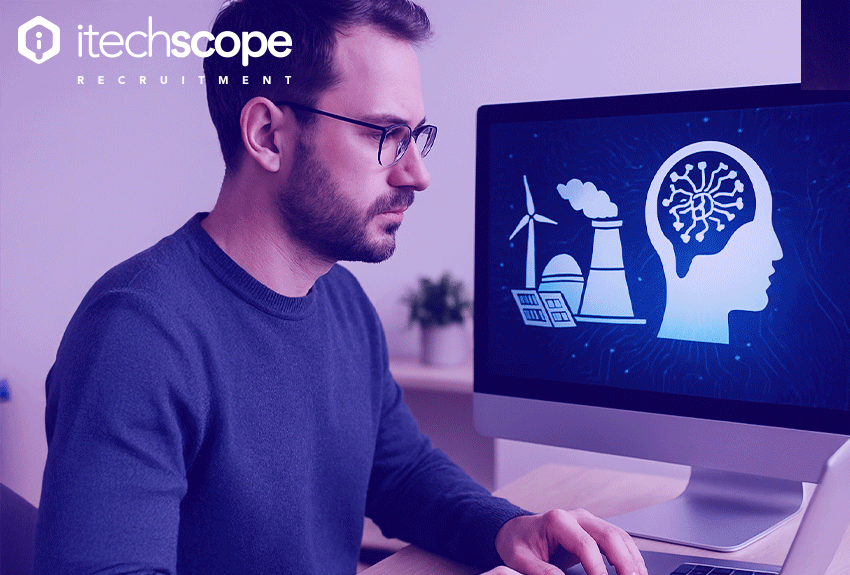Powering the AI Revolution: The Push for Nuclear Energy and Sustainable Solutions

The artificial intelligence (AI) revolution, while transformative, comes with an immense and rapidly escalating energy footprint. The computational demands of advanced AI models are driving an unprecedented surge in data centres' electricity consumption, forcing a critical re-evaluation of how we power our digital future. This burgeoning need is pushing clean and reliable energy sources, especially nuclear energy, to the forefront, intertwining technological advancement with crucial environmental responsibility.
The Insatiable Energy Appetite of AI
AI infrastructure and data centres are becoming colossal energy users. By 2035, data centres are projected to account for a staggering 8.6% of all US electricity demand, more than doubling their current share. Globally, electricity demand from data centres could reach 1,200 terawatt-hours by 2035. Training sophisticated AI models like GPT-4 alone requires significant power, with future "multi-gigawatt" data centres anticipated. This exponential growth makes finding stable, sustainable power sources paramount.
Nuclear & Sustainable Innovations for Tech
To meet this demand, the tech sector is increasingly turning to next-generation clean energy. Nuclear power, with its carbon-free, 24/7 reliability, is emerging as a key solution.
A major innovation is the development of Small Modular Reactors (SMRs). These advanced nuclear reactors are smaller (20-300 MW), factory-built, and can be deployed more rapidly (3-5 years) than traditional plants. SMRs offer enhanced passive safety features and can even be co-located with data centres, significantly reducing transmission losses and costs. Tech giants like Google (partnering with Kairos Power) and Amazon/Microsoft are actively exploring SMRs or purchasing nuclear power to fuel their expanding AI infrastructure.
Beyond nuclear, other sustainable solutions are crucial:
- Renewable Energy: Increased adoption of large-scale solar farms and wind power purchase agreements is a major trend.
- Energy Storage: Advanced battery systems and even hydrogen fuel cells are being developed to store intermittent renewable energy, ensuring consistent power.
- AI for Efficiency: Ironically, AI itself is being used to optimise energy consumption within data centres, predicting cooling needs, managing power distribution, and performing predictive maintenance to enhance overall efficiency.
Balancing AI Adoption with ESG Goals
The massive energy consumption of AI directly impacts corporate Environmental, Social, and Governance (ESG) goals. Companies are striving to balance rapid AI adoption with their environmental responsibilities:
- Green Data Centres: Efforts include designing and operating data centres with significantly lower Power Usage Effectiveness (PUE) ratios, reducing their overall energy intensity. China, for instance, aims for large data centres to achieve a 1.25 PUE by 2025.
- AI-Powered ESG Management: AI tools are increasingly deployed to enhance ESG efforts. This includes automating carbon footprint tracking, real-time emissions monitoring, optimising supply chains for lower environmental impact, and improving the accuracy of ESG reporting. AI helps companies identify inefficiencies and make data-driven decisions to meet sustainability targets.
- Renewable Energy Procurement: Companies are actively sourcing renewable energy through direct ownership or power purchase agreements to offset their carbon footprint.
A Glimpse into High-Energy Futures
The push for massive computational power isn't limited to commercial AI. Large-scale scientific endeavours, like China's proposed Circular Electron Positron Collider (CEPC) – often dubbed China's "new CERN" – underscore the growing global demand for robust, reliable energy. This ambitious project, aiming to be the world's largest particle accelerator at 100 km circumference, highlights the future's hunger for immense power beyond traditional industrial needs. While CEPC is a physics experiment, it reflects a broader trend where advanced technological and scientific pursuits necessitate substantial energy investments, influencing overall energy infrastructure development, including the move towards cleaner sources like renewables and nuclear.
Navigating the AI revolution means embracing innovative energy solutions. The strategic push for nuclear power, coupled with advancements in renewables and AI-driven efficiency, is vital for a future where technological progress and environmental stewardship go hand in hand.